 |
 |
 |
| |
HIV-1 Gag Polymorphisms Determine Treatment Response to Bevirimat (PA-457)
|
| |
| |
Reported by Jules Levin
17th Intl HIV Drug Resistance Workshop
June 10-1, 2008
Sitges, Spain
S. McCallister (Panacos), J. Lalezari, G. Richmond, M. Thompson, R. Harrigan, D. Martin, K. Salzwedel, G. Allaway
From Jules: several researchers at the Sitges meeting expressed their opinion that having to perform a test to screen for use of this drug would prevent doctors from using it, this is similar to the situation with the Tropism Trofile assay where doctors sometimes do not want to bother using the assay. The company Panacos also said they have backup drugs in development with perhaps better formulation profiles. Apparently, the drug may be useful for patients, particularly drug-resistant patients, so if an assay can be used to identify patients in which it will help I am astounded that doctors would not bother to use it. I am also astounded that doctors will not use Maraviroc because they would have to take the time to use a screening assay, the Trofile assay. It is clear that you should not use Maraviroc without performing the Trofile assay to identify if the patient is CCR5 tropic or not. It is also clear that some treatment-experienced patients need to use Maraviroc to achieve undetectable viral load. Over time the safety and efficacy of Maraviroc will receive more attention with increasing data so the drug may provide utility for patients with earlier HIV disease. Not to use Maraviroc due to the inconvenience of having to use the Trofile assay is not appropriate.
AUTHOR CONCLUSIONS: Bevirimat and Gag Polymorphisms
Mean viral load reduction of 44 heavily treatment-experienced patients:
-- Responders: -1.26 log copies/mL
-- Non-Responders: -0.05 log copies/mL
Optimal bevirimat treatment response requires plasma trough >20 ug/mL and lack of Gag polymorphisms at positions 369, 370 or 371
Phenotype confirmation of genotype data made at Panacos and at 2 independent labs
Free of Gag polymorphisms at positions 369, 370 or 371 in external databases:
-- 60.2% in 567 na´ve and 59.7% in experienced patients
-- 68.3% in isolates from 82 PI-experienced patients
Relative impact of specific amino acid shifts at positions 369-371 and impact in non-Clade B isolates not yet established
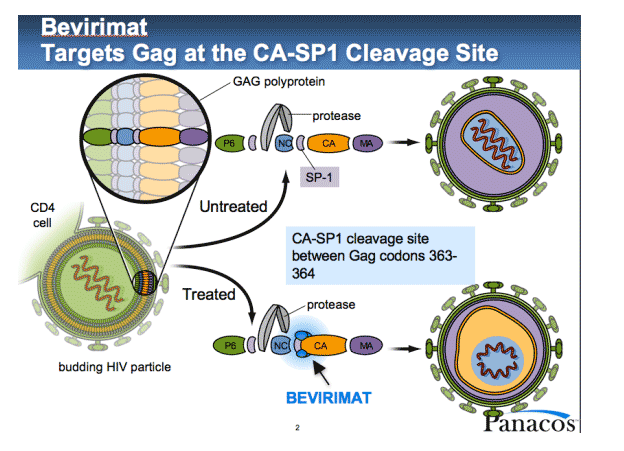
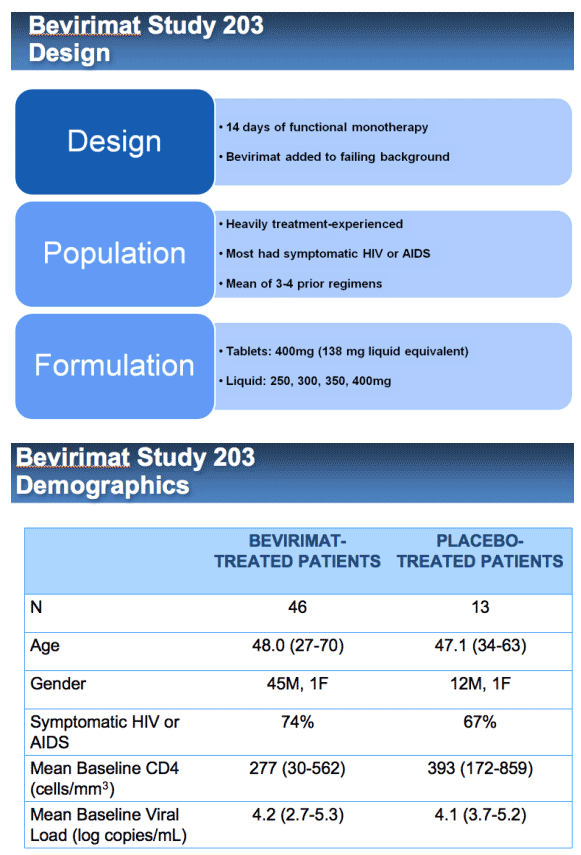
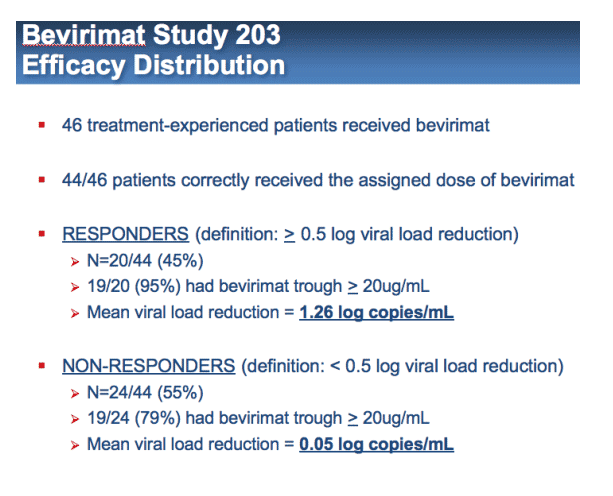
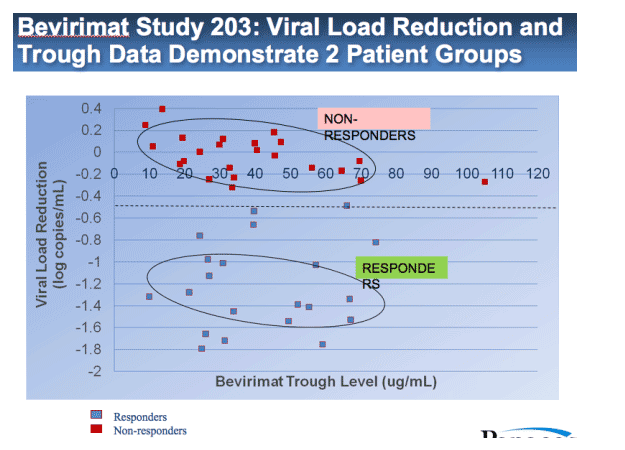
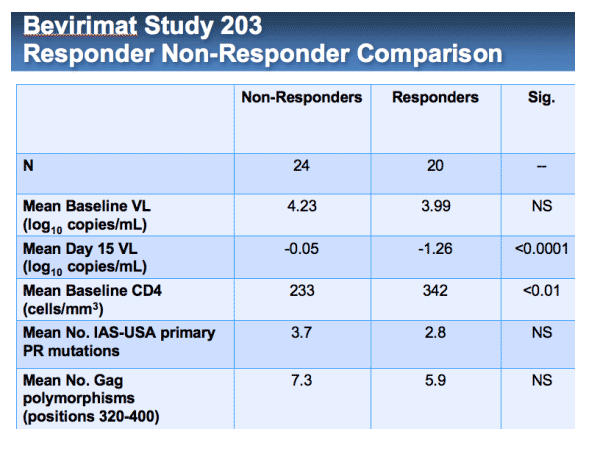
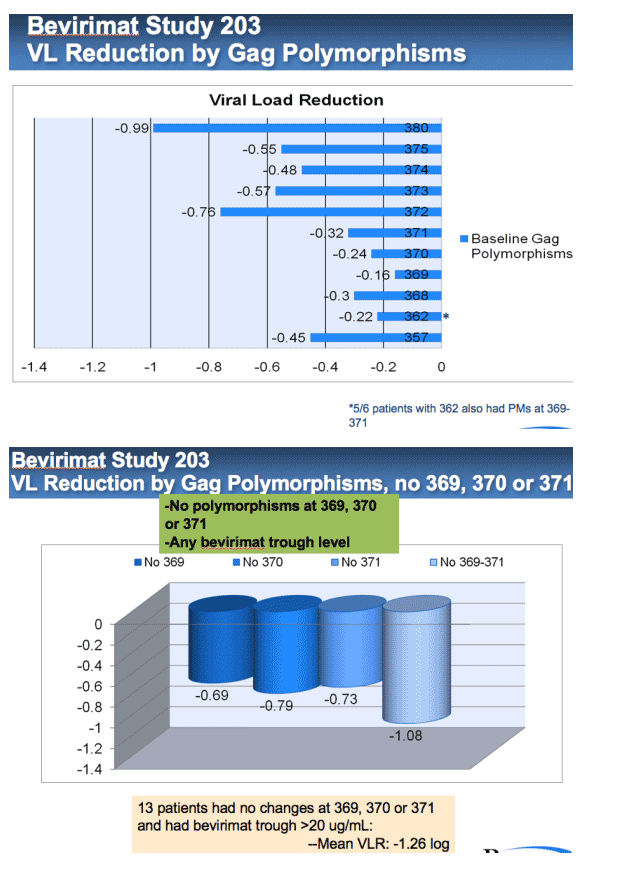
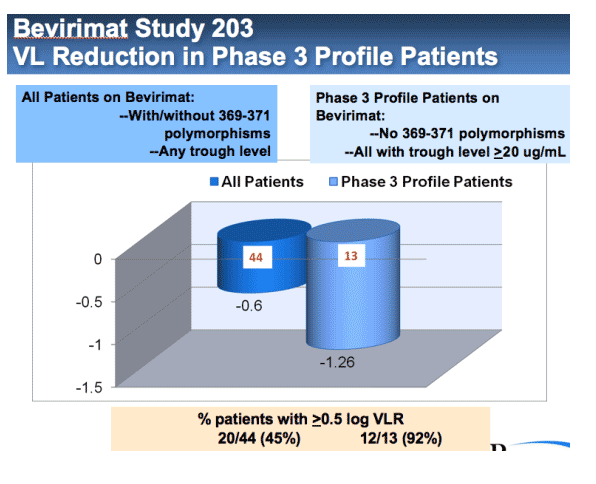
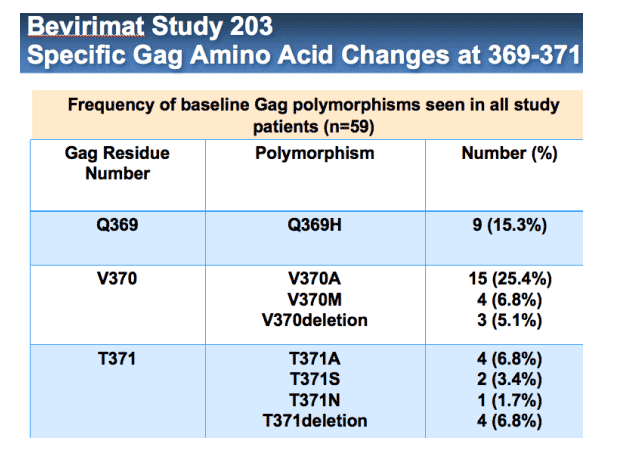
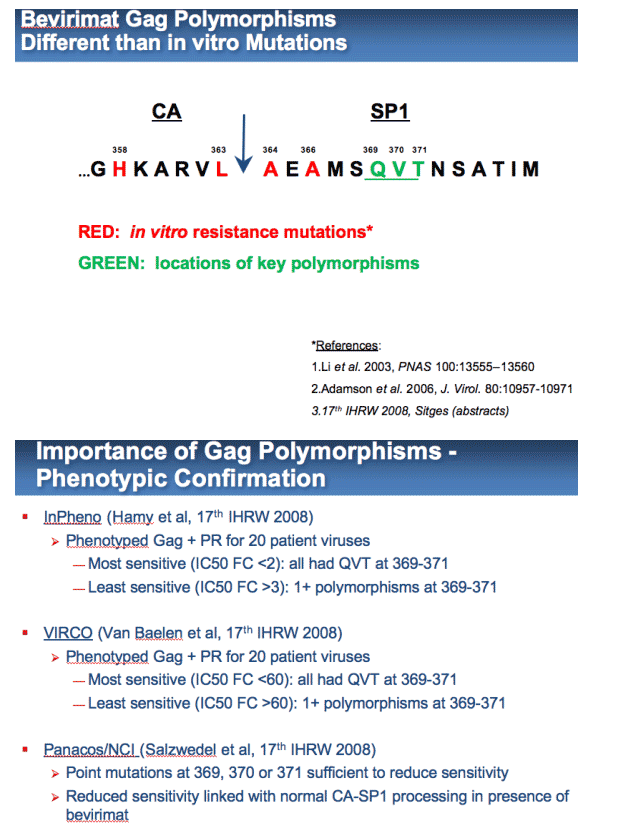
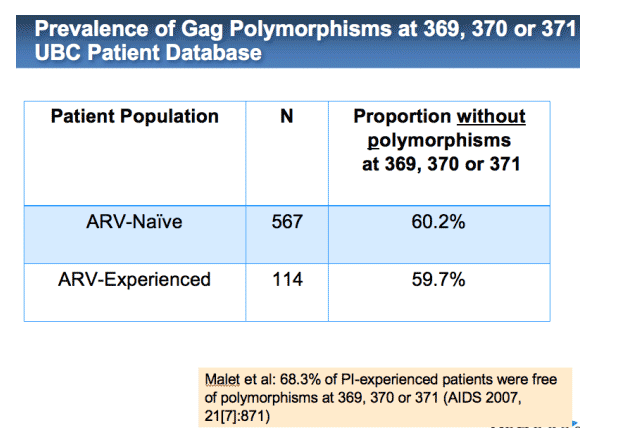
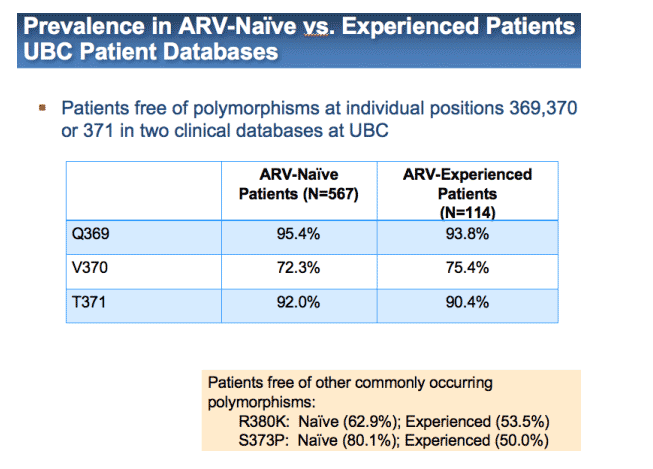
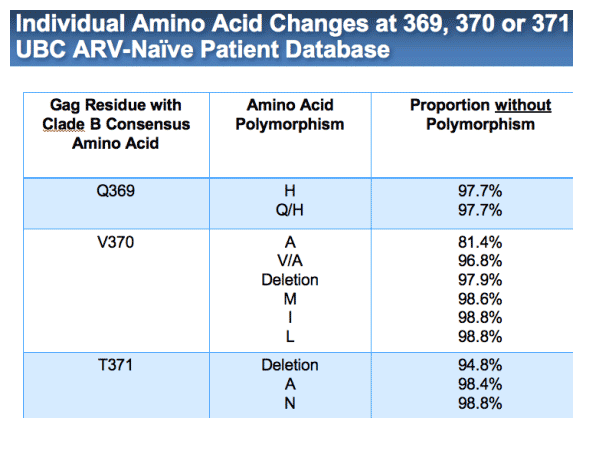
|
| |
|
 |
 |
|
|